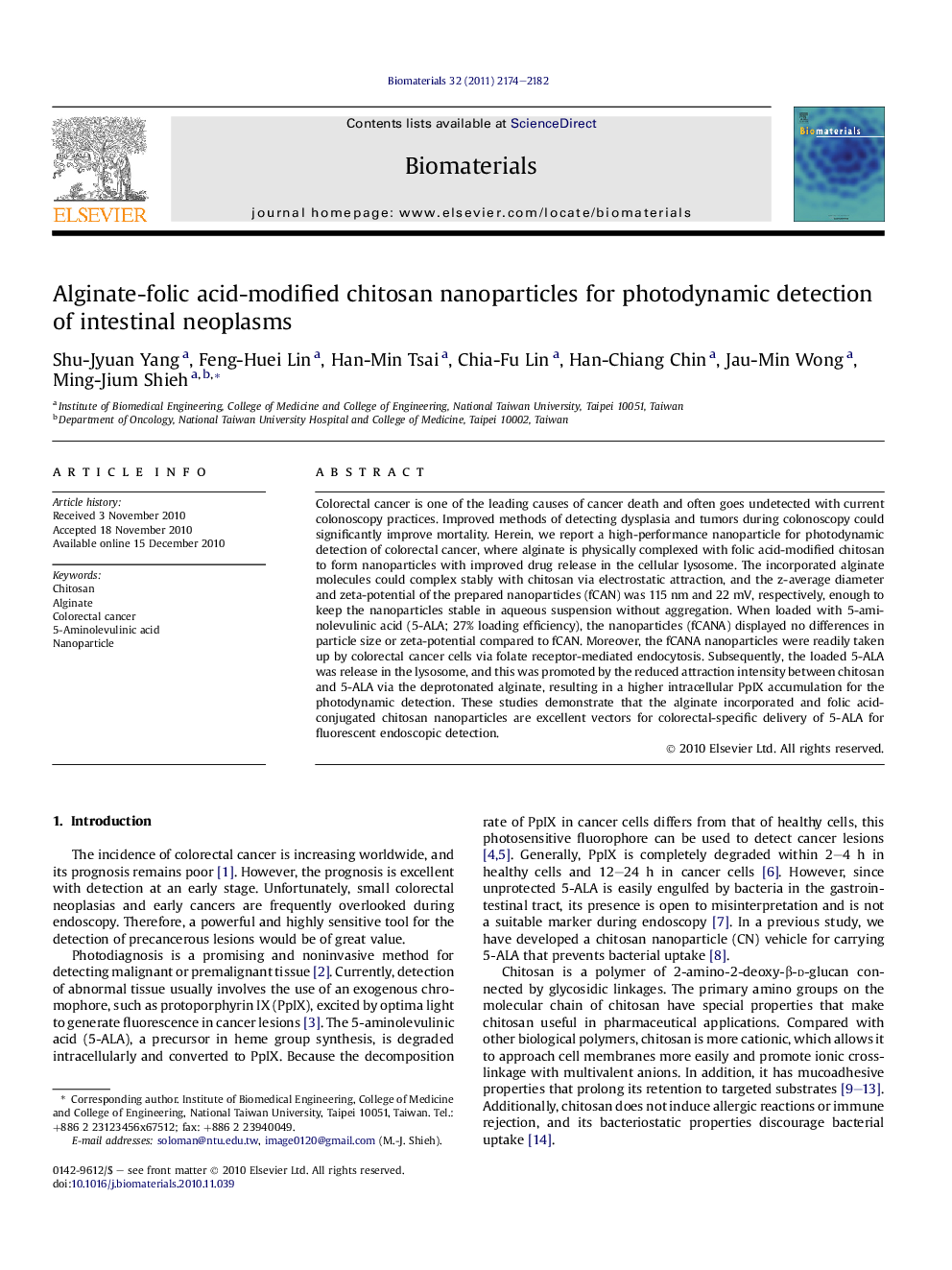| Article ID | Journal | Published Year | Pages | File Type |
|---|---|---|---|---|
| 10229951 | Biomaterials | 2011 | 9 Pages |
Abstract
Colorectal cancer is one of the leading causes of cancer death and often goes undetected with current colonoscopy practices. Improved methods of detecting dysplasia and tumors during colonoscopy could significantly improve mortality. Herein, we report a high-performance nanoparticle for photodynamic detection of colorectal cancer, where alginate is physically complexed with folic acid-modified chitosan to form nanoparticles with improved drug release in the cellular lysosome. The incorporated alginate molecules could complex stably with chitosan via electrostatic attraction, and the z-average diameter and zeta-potential of the prepared nanoparticles (fCAN) was 115Â nm and 22Â mV, respectively, enough to keep the nanoparticles stable in aqueous suspension without aggregation. When loaded with 5-aminolevulinic acid (5-ALA; 27% loading efficiency), the nanoparticles (fCANA) displayed no differences in particle size or zeta-potential compared to fCAN. Moreover, the fCANA nanoparticles were readily taken up by colorectal cancer cells via folate receptor-mediated endocytosis. Subsequently, the loaded 5-ALA was release in the lysosome, and this was promoted by the reduced attraction intensity between chitosan and 5-ALA via the deprotonated alginate, resulting in a higher intracellular PpIX accumulation for the photodynamic detection. These studies demonstrate that the alginate incorporated and folic acid-conjugated chitosan nanoparticles are excellent vectors for colorectal-specific delivery of 5-ALA for fluorescent endoscopic detection.
Related Topics
Physical Sciences and Engineering
Chemical Engineering
Bioengineering
Authors
Shu-Jyuan Yang, Feng-Huei Lin, Han-Min Tsai, Chia-Fu Lin, Han-Chiang Chin, Jau-Min Wong, Ming-Jium Shieh,
